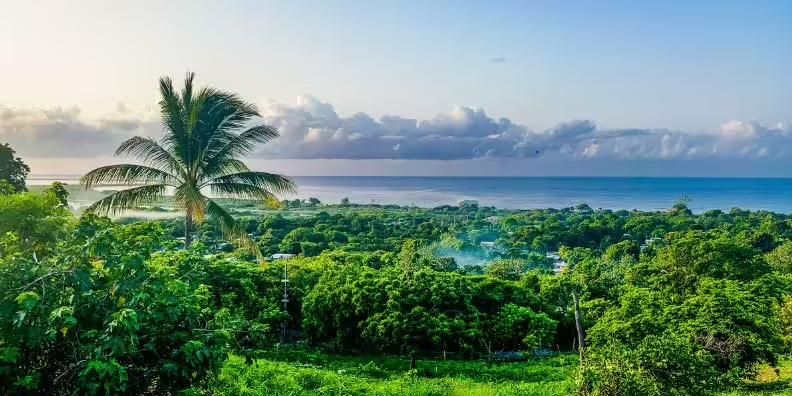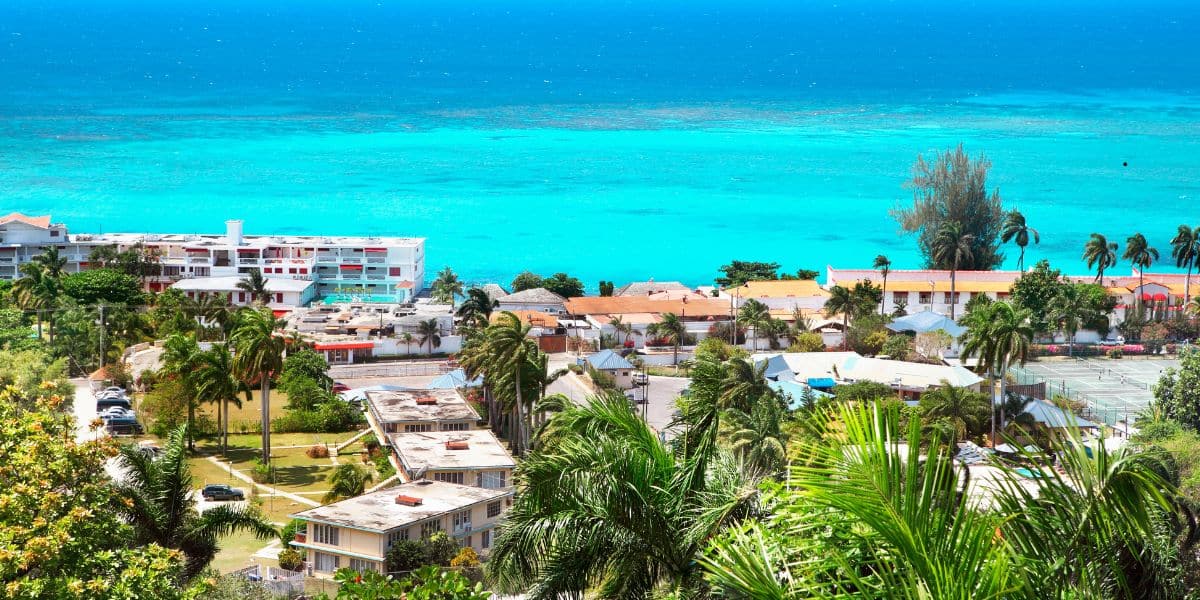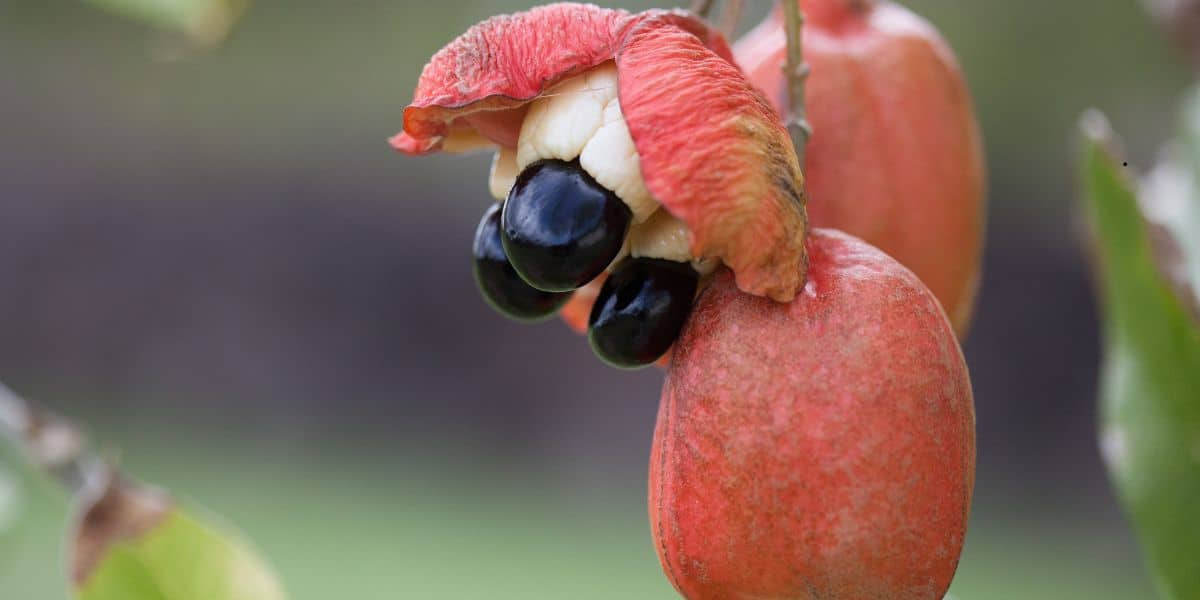Jamaica has a long and rich history which is very difficult to condense into a few paragraphs. I hope that I can do this history justice and give you enough insight into Jamaica’s past, without overwhelming you with too many details.
Let’s dive in.
The Tainos
600 – 1494
The original inhabitants of the Caribbean, the Tainos, are believed to have settled on the island in about 600 AD. Originating from South America, the Arawak-speaking tribe first migrated to the southern areas of the Caribbean, after which they moved north by canoe due to the Carib people displacing them. The Tainos people were a peaceable group who hunted and fished, who named the island Hamaika, that translates to mean “Land of Wood and Water.”
The Spanish Settlement and Christopher Columbus
1494 – 1655
On the 6th of May 1494, Christopher Columbus landed in Jamaica to look for gold. Upon arrival, he claimed Jamaica for Spain’s King and Queen. This started an era of Spanish rule which began in 1509 and ended in 1655. The three decades at the start of the settlement resulted in the Tainos going almost extinct from malnutrition, slavery, and disease.
The Spanish created ranches across the southern grasslands and introduced pigs, cattle, chickens, cats, horses, and dogs to the island. They also grew bananas, sugar cane, and citrus, which are now some of Jamaica’s most prominent exports.
The earliest African slave workers arrived in 1513 to do hunting and herding of cattle, pigs, and wild horses, and to work in the sugar mills that had been built. The Spanish called the island Xamayca, and the capital was Spanish Town.
British Invasion and Settlement
1655 – 1834
In May of 1655, the island was invaded by the British. The island was a poorly defended and sparsely populated colony, after which the British ruled for 300 years. This rule experienced the following:
- The Spanish were banished by 1670, following guerilla warfare for five years
- The rise of the Maroons, who were slaves that had escaped, who joined together as a significant hurdle for the British control of Jamaica
- The creation of big sugar estates
- The increase of African slave workers
- The Church of England being established as the church of the state
- Port Royal’s rise as the wickedest and most prosperous city, which fell into the ocean in 1692
- Moravian, Methodist, and Baptist missionaries arriving to convert slaves
- The island’s name of Xamayca was anglicized to be Jamaica
In the New World, the conditions that the slaves in Jamaica had to endure were some of the harshest seen. This treatment led to many violent slave rebellions, which were met with swift brutality. In 1807, the British slaving trade was eradicated; however, slavery was only fully abolished 30 years later on the 1st of August 1838.
Emancipation and Independence
1838 – 1962
After being freed, a lot of the ex-slaves relocated to the surrounding hills, but the sugar plantations still needed labor.
This resulted in Chinese and Indian laborers being brought in to replace the now emancipated slave force.
The ex-slaves struggled to survive through farming. The ex-slaves who remained on the estates found that they couldn’t care for their families. Banana plantations offered many jobs, but those positions had very little social freedom. Due to this, many people moved to the cities.
Some traveled overseas to find work opportunities. Some went to Panama to build the Panama Canal, some to the United States to work on farms or on military bases, and some to the United Kingdom, as soldiers in World War II or to help rebuild at the end of the war.
Although the slaves had been freed, they were viewed as lower class citizens, and only the wealthiest citizens had the right to vote. In 1865, there was a civil rights demonstration called the Morant Bay Rebellion which triggered a brutal reaction from those in charge. Over 300 people were hanged, including, most famously known, Paul Bogle.
Marcus Garvey’s teachings became very popular in the early 1900’s, particularly among the poorer, black groups. Based on these teachings, the Rastafarian movement came into existence and became nationally known in the 1930’s.
In 1938, nation-wide riots erupted due to the poor looking for respect for their human rights. These riots resulted in the creation of Jamaica’s political party structure. In the 1944 elections, all Jamaicans were given the right to vote, allowing the country to fast track itself to independence, which happened in 1962.
Independence to Current Day
1962 to present
On the 6th of August 1962, after Independence Day, there was a considerable amount of pride across the nation. Jamaicans were able to govern themselves and started developing a thriving economy through the growth of tourism, coffee industries, and bauxite.
There were many notable developments from 1972 onwards, including:
- In 1972, the People’s National Party became the ruling party. Under Michael Manley’s leadership, radical social modifications were introduced, including education being improved for all of the classes.
- The Rastafarian movement grew to include younger middle-class citizens and many intellectuals
- Bob Marley launched Jamaican music onto the international stage
- Many middle-class citizens migrated to the USA and Canada due to fears of the PNP’s socialist biases and their links to Cuba
- Election campaigns became the scene for vicious events. Supporters of the party used guns in 1976 and 1980, which resulted in firearms remaining as a social threat since then
- The general Jamaican economy began to deteriorate due to global debt burdens and large import bills
Today, it is predicted that there is the same number of Jamaicans living internationally as there are living on the island. Western values and culture have permeated the island, mainly through the internet and television, but the national identity of our people, as well as our culture, sports, and music, have remained active in light of these influences, and are known worldwide.




